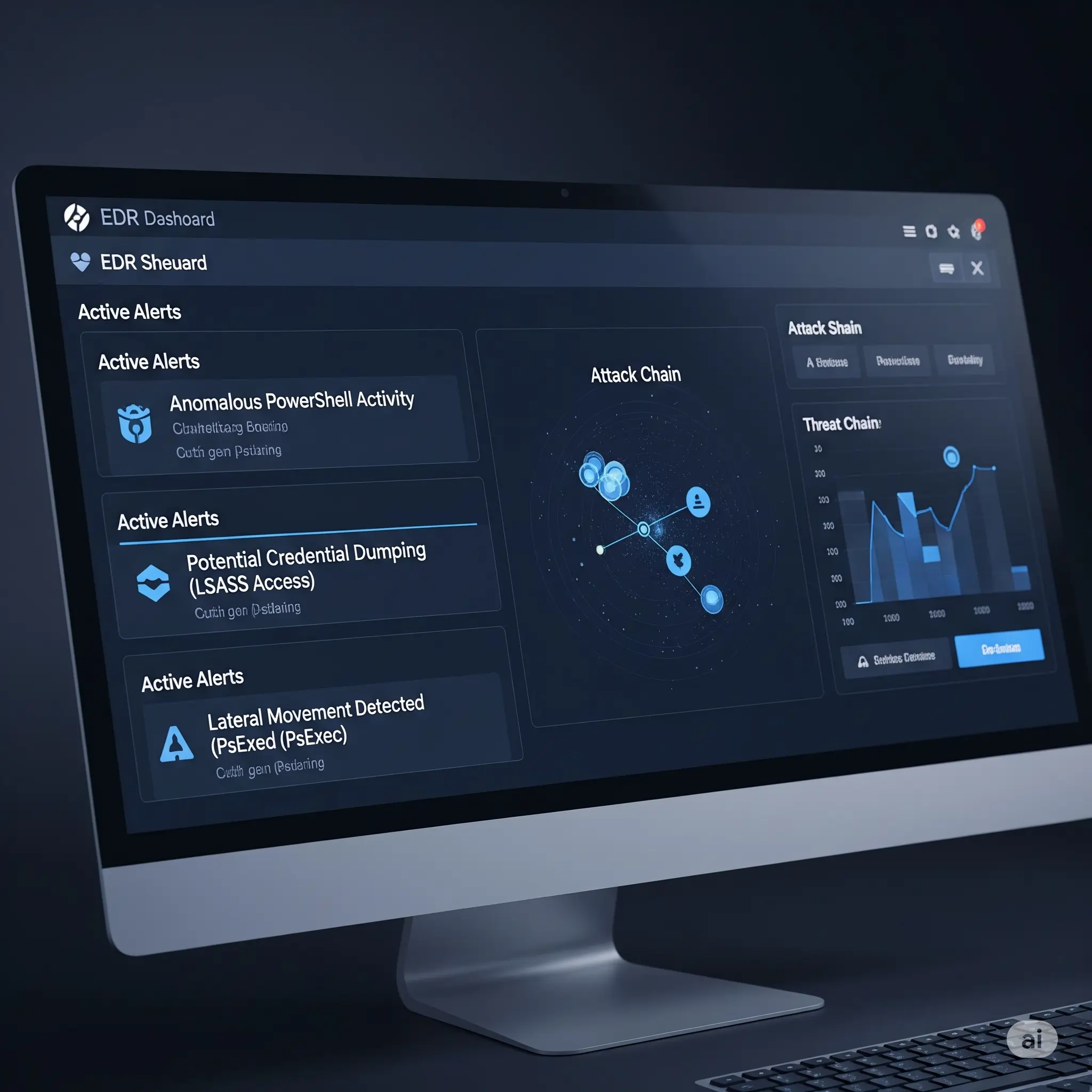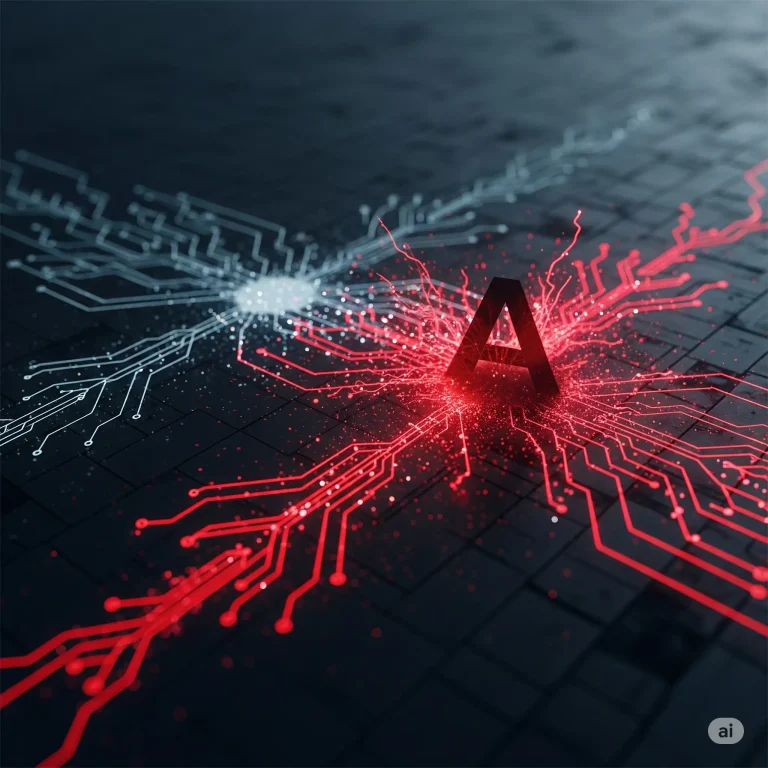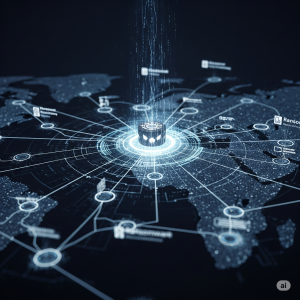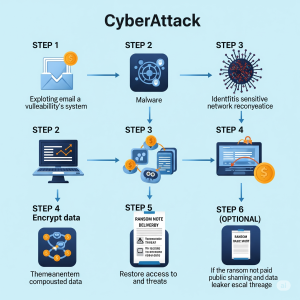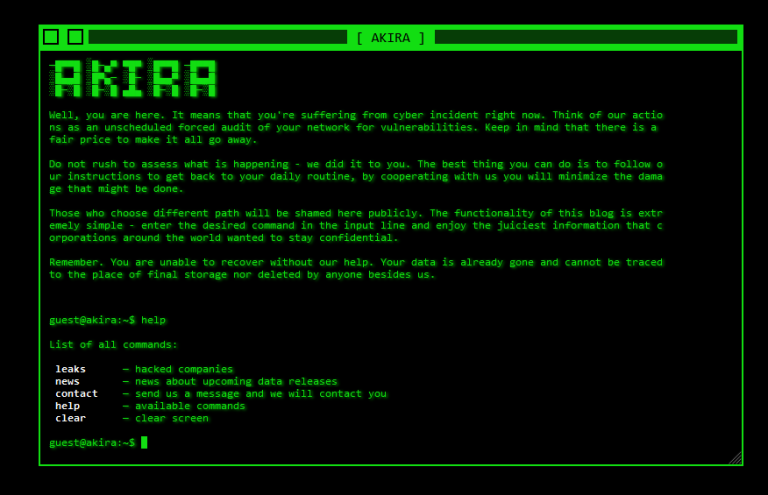Can EDR Stop Akira Ransomware? Your Endpoint Defense Guide
Alright, let’s talk about the digital front lines. You’ve got your defenses, and a big player in that lineup is probably your Endpoint Detection and Response (EDR) solution. It’s supposed to be the eagle-eyed guard, right? The one that spots the trouble traditional antivirus might miss. But then comes along a heavyweight like Akira ransomware, a group that’s proven adept at slipping through digital defenses since it burst onto the scene.
So, the big question we’re tackling today is: how does your EDR really stack up against a sophisticated threat like Akira? Can it catch these intruders, or are they waltzing past your digital sentries? We’ll dig into Akira’s bag of tricks for fooling EDRs, what your EDR can catch if it’s sharp, and how to tune it to give yourself the best fighting chance. Because let’s face it, in this game, every little bit of an edge counts.
Also read: Akira’s Evolving Playbook: 2025 Attack Trends & Defense Lessons
What’s EDR Anyway? A Quick Refresher on Your Digital Sentry
Before we pit EDR against Akira, let’s quickly level-set. Endpoint Detection and Response isn’t just your old-school antivirus with a new hat. Think of it more like a security camera system with a smart, proactive guard watching the monitors.
- It Detects: EDR tools continuously monitor endpoint and network events, looking for suspicious activity that could indicate an attack. They go beyond simple signature-matching and look for malicious behaviors.
- It Investigates: When something fishy is flagged, EDR provides the tools and data (telemetry) to dig deep, understand the scope of the potential attack, and see how it unfolded.
- It Responds: EDR allows security teams to take action, like isolating an infected endpoint to stop the spread, killing malicious processes, or rolling back certain changes.
It’s designed to catch the threats that sneak past traditional preventative measures – and ransomware groups like Akira are exactly the kind of threat it’s built for. Or so we hope.
Akira’s Anti-EDR Playbook: Slipping Past the Guards
Akira’s affiliates aren’t amateurs; they know EDR is a significant hurdle. So, they come prepared with techniques to either bypass, disable, or significantly hinder EDR effectiveness. Here’s a glimpse into their common tactics, as observed in incidents through late 2024 and early 2025:
- Direct Disablement Attempts:
- Killing Processes: Attackers often use legitimate administrative tools or custom scripts to try and terminate EDR agent processes or services. Tools like PowerTool, Process Hacker, or Terminator (a tool known to exploit legitimate anti-rootkit driver vulnerabilities to kill protected processes) have been seen in Akira-related intrusions.
- Exploiting EDR Vulnerabilities (Rare but Possible): While less common, if an EDR solution itself has an unpatched vulnerability, sophisticated attackers might attempt to exploit it.
- Living Off the Land (LOLBins):
- Akira affiliates make extensive use of legitimate operating system tools and administrative utilities (LOLBins) like PowerShell, WMI (Windows Management Instrumentation), Bitsadmin, and PsExec. By using trusted system tools for malicious purposes (e.g., lateral movement, file execution), they can make their activity harder to distinguish from benign administrative actions, potentially flying under the EDR’s radar if its detection rules aren’t finely tuned for anomalous usage.
- Encrypted Command & Control (C2) Traffic:
- Like many modern malware operations, Akira often uses encrypted channels for its C2 communications. This can make it harder for EDRs with network monitoring capabilities to inspect the content of the traffic and identify malicious commands or data exfiltration.
- Disabling Security Logging or Tampering with Telemetry:
- Attackers might attempt to clear or alter security logs that EDR systems rely on, or even try to interfere with the EDR agent’s ability to send telemetry back to its management console.
- Rapid Execution & Encryption:
- Once they have the necessary access and have disabled defenses, some ransomware encryptors are designed to execute very quickly, aiming to encrypt as much data as possible before an EDR can fully respond or an analyst can intervene.
![[ai generated]
Abstract image of a shadowy entity bypassing a compromised EDR shield, symbolizing Akira ransomware's EDR evasion tactics.](https://akiradecryptor.com/wp-content/uploads/2025/05/edr--1024x1024.webp)
Catching Akira in the Act: How a Well-Tuned EDR Can Fight Back
Despite Akira’s evasion efforts, a robust and properly configured EDR solution is far from helpless. It can be instrumental in detecting various stages of an Akira attack:
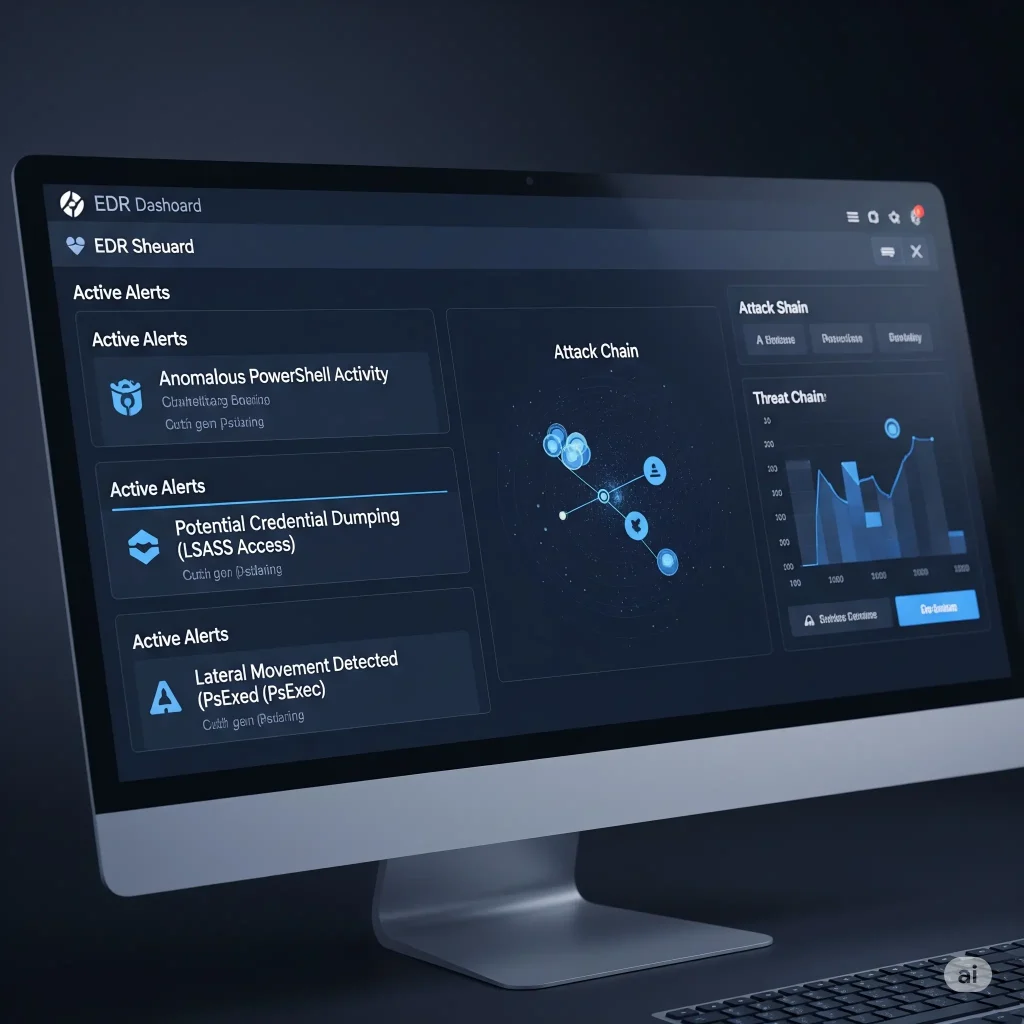
- Suspicious PowerShell & Command-Line Activity:
- Akira frequently uses PowerShell for tasks like deleting Volume Shadow Copies (
vssadmin delete shadows /all /quiet), modifying security settings, or downloading further payloads. EDRs can flag anomalous PowerShell scripts, obfuscated commands, or unusual parent-child process relationships.
- Akira frequently uses PowerShell for tasks like deleting Volume Shadow Copies (
- Credential Dumping Attempts:
- When Akira affiliates attempt to harvest credentials using tools like Mimikatz or by accessing the LSASS process memory, a vigilant EDR can detect these specific techniques and alert security teams.
- Anomalous Use of Administrative Tools for Lateral Movement:
- Unusual or widespread use of tools like PsExec, WMI, or suspicious RDP activity patterns can be flagged by EDRs that monitor process creation and inter-system communication.
- Attempts to Disable Security Tools:
- EDR solutions with self-protection mechanisms can detect and prevent attempts to terminate their own processes or services. Alerts on such attempts are strong indicators of malicious activity.
- Unusual File Access and Modification Patterns:
- During the data exfiltration phase, EDR might detect mass file access by unusual processes or tools like Rclone. During encryption, while sometimes too late for prevention, EDR can detect rapid, widespread file modification and renaming, helping to identify the scope quickly.
- Connections to Known Malicious IPs/Domains (with Threat Intelligence Integration):
- If the EDR is integrated with up-to-date threat intelligence feeds, it can flag communications with known Akira C2 servers or infrastructure.
Beyond Just Alerts: EDR’s Crucial Role in Akira Incident Response
When an Akira attack is suspected or detected, EDR becomes a cornerstone of the response effort:
- Endpoint Isolation: Quickly isolating affected endpoints from the network is a primary response action, and EDR consoles often provide this capability with a few clicks. This helps prevent the ransomware from spreading further.
- Process Termination: EDR can be used to kill active malicious processes associated with Akira, potentially halting encryption or data exfiltration in progress.
- Forensic Data Collection: EDR solutions continuously collect vast amounts of endpoint telemetry (process execution, network connections, file modifications, registry changes). This data is invaluable for investigators to understand the attack’s timeline, scope, root cause, and what data might have been compromised.
- Attack Chain Visualization: Many EDRs provide tools to visualize the attack chain, showing how intruders moved from the initial point of compromise to their objectives. This helps in understanding the full picture of the breach.
Tuning Your EDR for the Akira Showdown: Key Best Practices
Simply having an EDR isn’t enough; it needs to be optimized to effectively counter threats like Akira:
- Aggressive Detection Posture & Fine-Tuning:
- Don’t rely solely on out-of-the-box settings. Tune your EDR policies to be more aggressive in detecting suspicious behaviors commonly associated with ransomware (e.g., specific PowerShell commands, access to LSASS, attempts to disable security services).
- Work to reduce false positives so that real alerts aren’t lost in the noise.
- Ensure Comprehensive Endpoint Coverage & Agent Health:
- Make sure the EDR agent is deployed on all endpoints, including servers (especially critical ones like domain controllers and file servers).
- Regularly monitor agent health and ensure they are updating and communicating correctly.
- Integrate with Threat Intelligence:
- Feed your EDR with high-quality, up-to-date threat intelligence feeds that include IOCs related to Akira and other active ransomware groups.
- Enable Self-Protection & Anti-Tampering Features:
- Ensure your EDR’s built-in defenses against tampering or uninstallation are fully enabled and robust.
- Develop Custom Detection Rules & Watchlists:
- Based on intelligence about Akira’s TTPs, create custom detection rules or watchlists within your EDR to look for specific indicators.
- Regularly Test Your EDR’s Capabilities:
- Conduct controlled tests (e.g., using Atomic Red Team or similar frameworks with benign scripts that mimic ransomware behavior) to ensure your EDR is detecting and alerting as expected.
- Combine with Proactive Threat Hunting:
- Use your EDR data to proactively hunt for signs of compromise that automated detections might have missed. Look for subtle anomalies and deviations from baseline behavior.
The EDR Reality: A Powerful Tool, Not a Silver Bullet
It’s crucial to have realistic expectations. While a well-configured EDR is a powerful and essential layer in your defense against Akira, it’s not infallible. Determined attackers are constantly developing new techniques to bypass EDRs.
Therefore, EDR must be part of a broader, defense-in-depth strategy that includes:
- Robust network security (firewalls, IDS/IPS, network segmentation).
- Strong identity and access management (MFA, PAM, least privilege).
- Regular vulnerability management and patching.
- Comprehensive user awareness training.
- And, critically, a resilient backup and disaster recovery plan.
FAQs: Your EDR & Akira Questions Answered
Can EDR alone stop an Akira ransomware attack?
While EDR significantly improves detection and response, it’s unlikely to stop 100% of sophisticated attacks like Akira on its own. It’s a critical component of a layered security strategy, not a standalone solution.
What’s more important: EDR prevention capabilities or detection/response?
For advanced threats like Akira that actively try to bypass prevention, robust detection and rapid response capabilities are paramount. However, EDRs with strong behavioral blocking features can certainly help reduce the attack surface.
How quickly should we expect our EDR to detect an Akira intrusion?
Detection speed varies based on the EDR, its configuration, the specific TTPs used by Akira, and whether the activity is immediately flagged as high-confidence malicious. The goal is detection as early as possible in the attack chain.
If our EDR generates an alert related to Akira, what’s the first thing we should do?
Follow your incident response plan immediately. This typically involves isolating the affected endpoint(s), escalating to your security team or incident response provider, and beginning an investigation.
How does EDR help if Akira has already encrypted files?
Even post-encryption, EDR provides vital forensic data to understand how the breach occurred, which systems were affected, what data might have been exfiltrated, and to ensure the threat is fully contained before recovery efforts begin.
